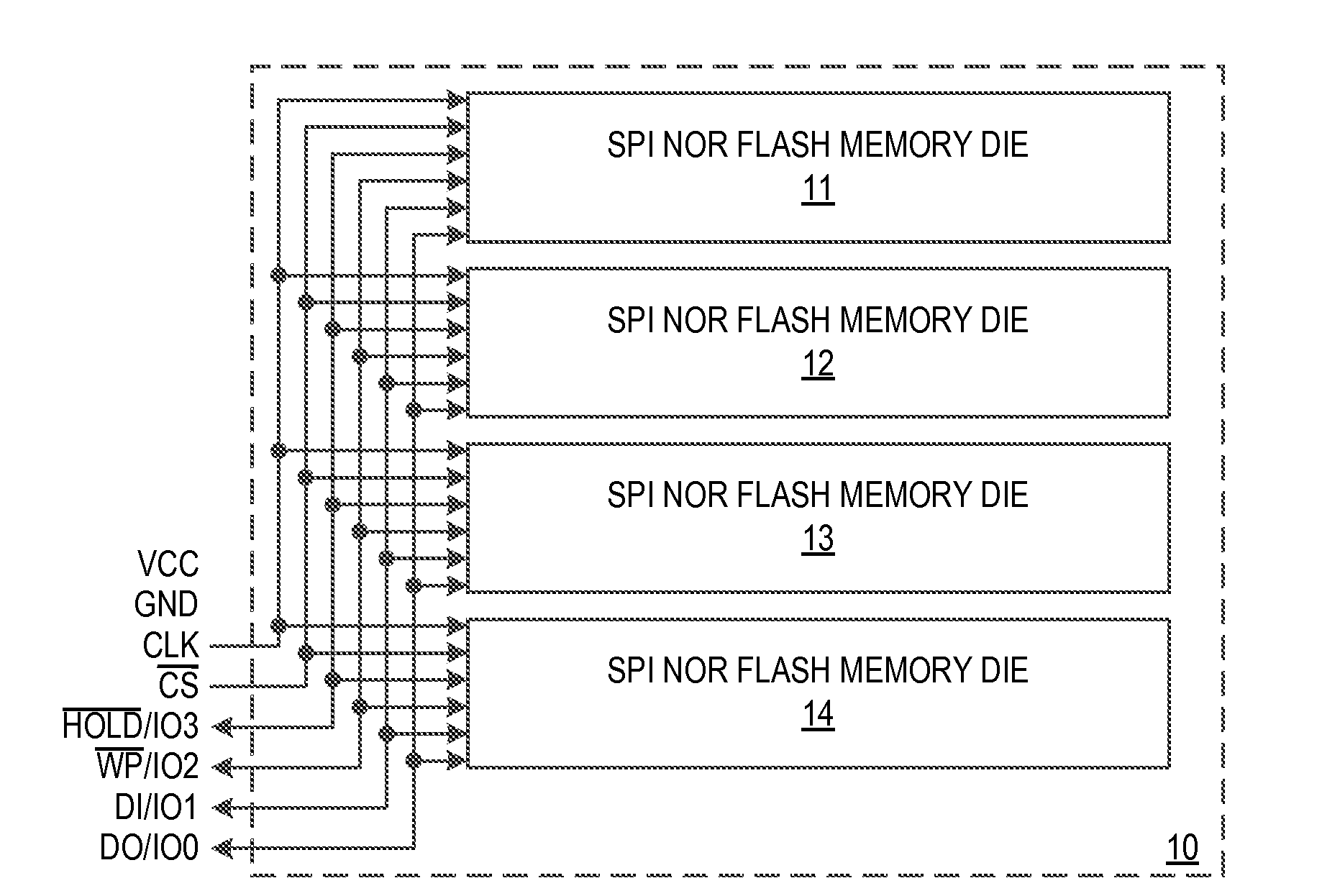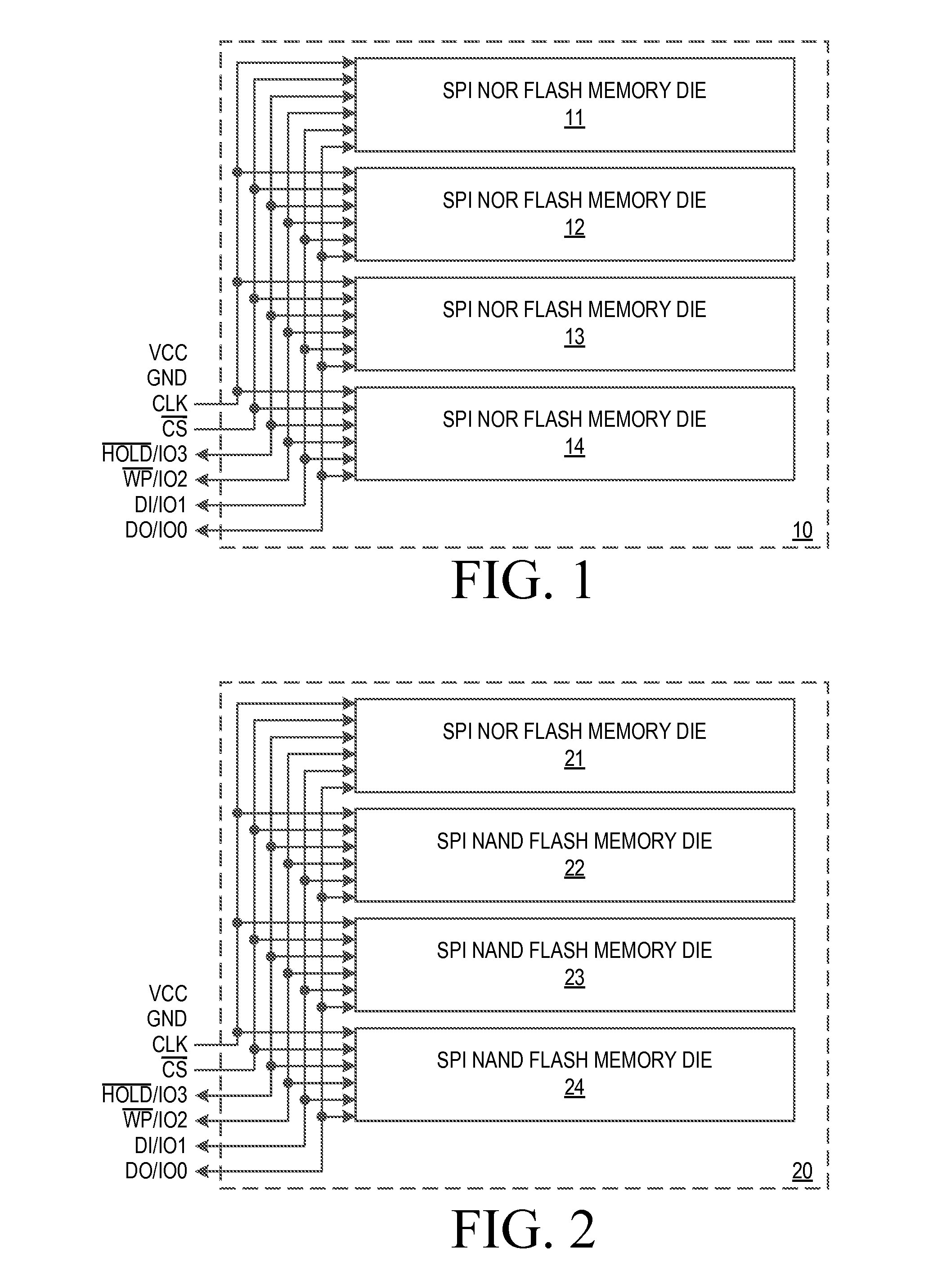Stacked Die Flash Memory Device With Serial Peripheral Interface
a flash memory device and serial peripheral technology, applied in the field of flash memory, can solve the problems of high cost, inability to operate flash memory devices with stacked spi flash memory devices, and inability to meet the requirements of high density monolithic silicon dies, and achieve the effect of increasing capacity
- Summary
- Abstract
- Description
- Claims
- Application Information
AI Technical Summary
Benefits of technology
Problems solved by technology
Method used
Image
Examples
Embodiment Construction
[0021]Any number of Serial Peripheral Interface (“SPI”) flash memory die may be stacked and packaged using any desired multi-chip packaging technique to realize any one or combination of various capabilities such as low per-bit cost, high density storage, code shadowing to RAM, and fast random access for “execute in place” applications, while preserving the advantages of the SPI interface. As used herein, the term “SPI flash memory die” refers to an integrated circuit die which includes a flash memory array of any type or types, and a set of interface pins which conform to the SPI protocol. During device manufacture, each of the stacked SPI flash memory die is assigned a unique identifier or “Die ID” relative to the other stacked SPI flash memory die in the package. During normal operations, the unique Die IDs are used by a Die Select instruction to enable one of the stacked SPI flash memory die to respond to subsequent instructions on the SPI interface, while disabling the other st...
PUM
 Login to View More
Login to View More Abstract
Description
Claims
Application Information
 Login to View More
Login to View More - R&D
- Intellectual Property
- Life Sciences
- Materials
- Tech Scout
- Unparalleled Data Quality
- Higher Quality Content
- 60% Fewer Hallucinations
Browse by: Latest US Patents, China's latest patents, Technical Efficacy Thesaurus, Application Domain, Technology Topic, Popular Technical Reports.
© 2025 PatSnap. All rights reserved.Legal|Privacy policy|Modern Slavery Act Transparency Statement|Sitemap|About US| Contact US: help@patsnap.com



